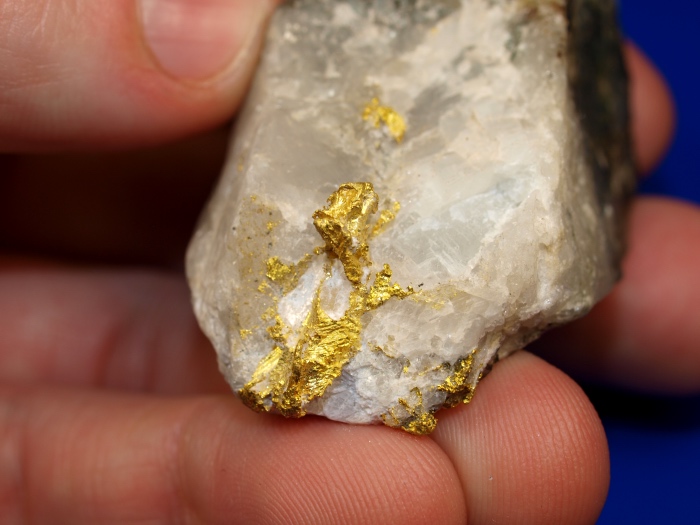
There has been no mining activity on Antarctica even though the continent is likely to hold an abundance of metallic minerals, oil, natural gas and even possible gemstones.
Although there exists technology that can be applied to get the gold that lies beneath the thick ice, the conditions (and current regulations) makes exploitation unlikely.
Antarctica is a frozen desert that experiences extreme low temperatures that vary based on latitude and distance from the ocean. There are no year-round inhabitants, and activities that take place on the continent are governed by the Antarctica treaty. The continent is occupied by scientific activities as opposed to commercial activities.
The experts that have conducted numerous research believe that the possible resources in the continent include silver, copper, gold, nickel, platinum, iron ore, chromium, cobalt, molybdenum, zinc, manganese lead, and uranium. Carbon and coal have been located in minimum quantity.
All these resources are yet to be exploited due to the treaty that bans any form of exploitation until at least 2048.
Put Away the Pick and Shovel: Antarctica’s Mining Ban
Currently, there is a ban against mining in Antarctica through the Antarctica Treaty until 2048. This treaty acknowledged the unique ecology of the frozen continent. For at least 30 more years, we don’t expect to see any commercial mining activity to take place.
When the treaty was enacted there really wasn’t much interest in mining of any sort in Antarctica. Although it has always been probable that there were mineral resources hidden beneath the ice, the harsh weather and ice made the logistics of mining nearly impossible with the technology of the time.
Access is no simple matter. Icebergs drift around the continent and frequently break off into the ocean. There are literally miles and miles of ice that would need to be drilled through to even access the rock underneath. Logistically, doing any large-scale mining on Antarctica would be a major feat.
Even without the ban, most experts in the field of mining agree that it would be very inhospitable and expensive to conduct any mining activities. Some of the issues that has impeded the efforts of exploitation in Antarctica includes the resistance from environment specialist, Antarctica distance to industrialized areas, transportation cost, an extreme condition that is potentially dangerous to human life, and a lack of sufficient technology for mining.
And perhaps above all else, the current availability of minerals in other parts of the world without such extreme weather conditions makes them much more attractive.
Read: Huge Mining Potential in Argentina Despite Challenges
Could Receding Ice Open Up New Ground?
We are seeing in many areas of the Arctic that receding ice sheets and generally warmer weather are opening up ground that is holding much interest to commercial prospectors. Vast amounts of open ground that were once covered in glaciers are now much more accessible.
Even with a warming climate and considerable ice melt, we are still a long way from seeing conditions in Antarctica that would be positive from a miners perspective.

Who Owns the Minerals?
Even if the Antarctica Treaty were to be reversed or allowed to expire, there is still the matter of deciding who actually would have rights to mineral exploration in Antarctica.
Countries who believe to have the geopolitical power may begin to venture into the continent for exploitation purpose. The walkout clause by the members poses a potential danger as the member may decide to modify the protocol for their own benefit.
The mining ban can be said to be indefinite and the rules on modification of the ban are provided in the protocol. Any member is at liberty to raise any concern and any amendment can be done after a majority vote. As the world experiences climatic change, the prices of commodities keep going up as well as the technological advancement that eyes at the vast minerals that are believed to be in the continent.
Is Future Mining a Real Possibility?
Just because mining is not on the table at the moment, you can be certain that large mining companies are keeping their eye on the frozen continent. As new technologies come along, the potential to operate mines in harsher environments and exploit more challenging resources that are currently hidden beneath ice may actually be attainable.
Major increase of commodity prices will likely need to take place before Antarctica gets any real interest. Undoubtedly there are a variety of hidden mineral resources that have yet to be discovered. However, extracting them profitably at current prices is highly unlikely.
As for the future, who is to say? In a few decades, perhaps the prices of gold and other minerals with double, triple, or 10x what they are currently. If this were to happen you can bet that mining companies would start showing more interest in the mineral resources of Antarctica.
For now, the continent is set aside for research. It can be expected to stay that way for many more decades, but environmentalists are keeping a close eye on the future.
Next: Basic Equipment to Get You Started as a Gold Miner
